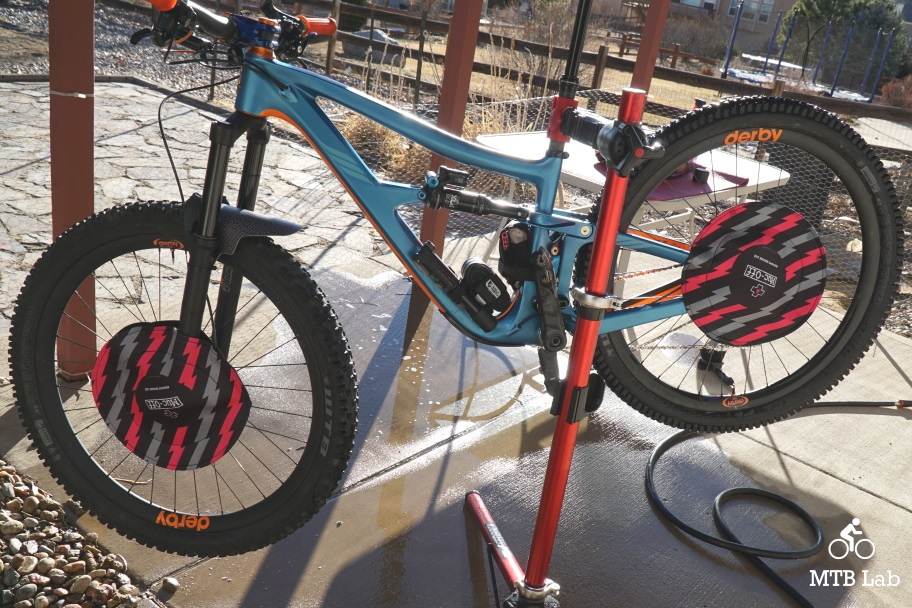
The simple but highly functional Muc-Off Disc Brake Covers will help keep contaminations off of your rotors and pads when cleaning the bike and during transportation. Their durable and reusable design means they’re fast and easy to use and help to ensure you won’t get any overspray from cleaners, polish, and lube on your wheel’s brake system during periodic maintenance. You can cover the brake assembly with a rag for protection when cleaning, but ideally, using the superb Muc-Off Disc Brake Covers are the way to go.
They fit both road and mountain bike disc brakes, are sold as a pair, and retail for $29.
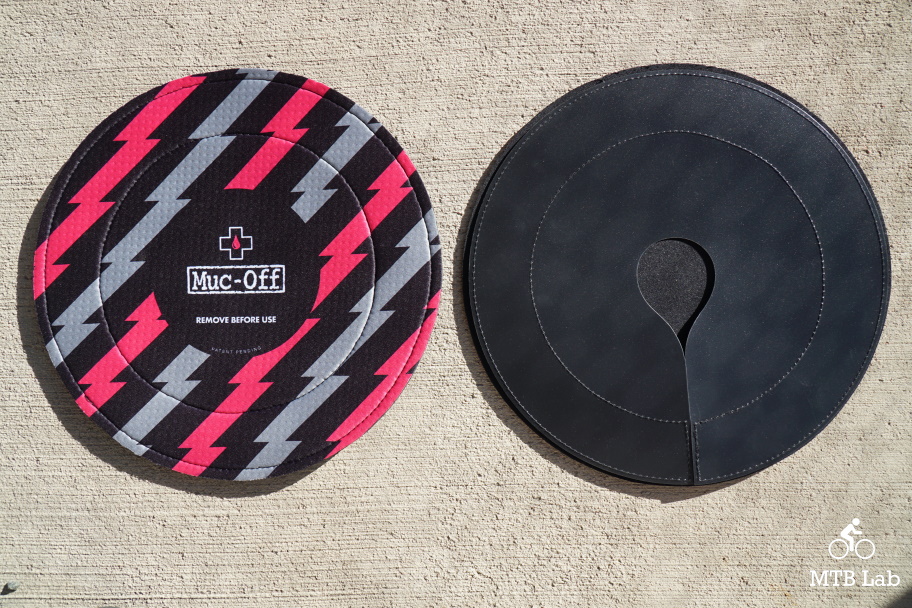
Neoprene cover and plastic base plate
Features
The covers consist of a stiff but flexible plastic back/base sheet that uses a Velcro hook and loop fastener system to connect to a breathable neoprene main body. Neoprene or polychloroprene was invented in 1930 by DuPont scientists. In this particular case, it’s an open-cell foam manufactured by frothing the rubber with nitrogen gas, which creates tiny enclosed and separated gas bubbles.
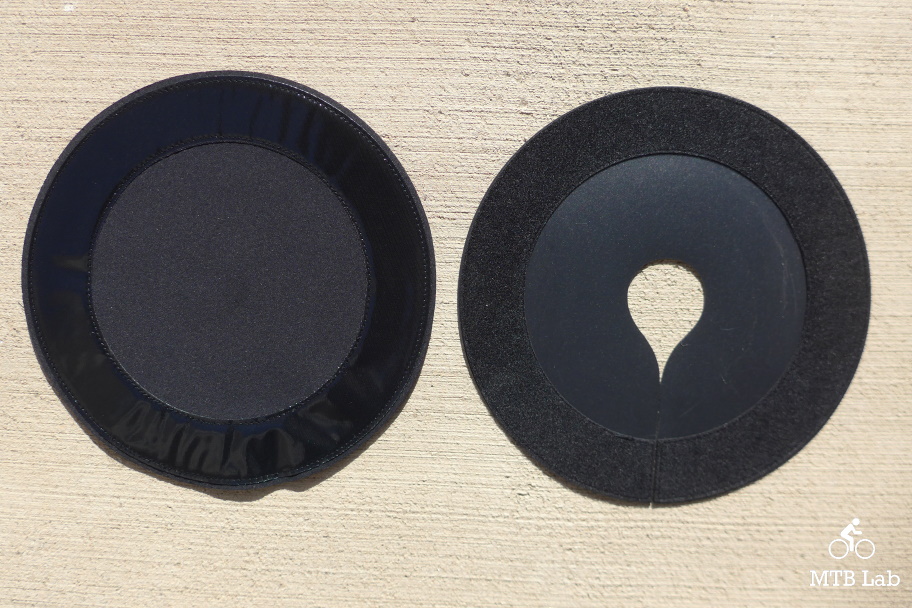
Velcro section on the inside of neoprene cover and plastic base plate
The foam and plastic design provide ample protection from chemical overspray and containments while the breathable neoprene allows any trapped moisture to evaporate, keeping corrosion to a minimum.
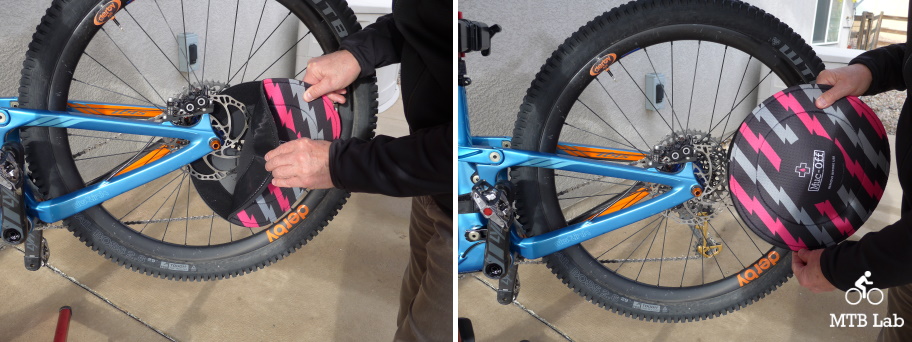
Installation
Attaching the disc covers is simple and easy and can be done in two different methods. You can entirely separate the plastic base plate and neoprene cover and smoosh them back together over the brakes, or you can slightly pull them apart and slide the base plate over the axle and then push them together.
I preferred the latter process of sliding the covers on for installation. Position the cover with the base plates split towards the hub and open it slightly, and start pushing the unit between the rear of the brake and over the axle.
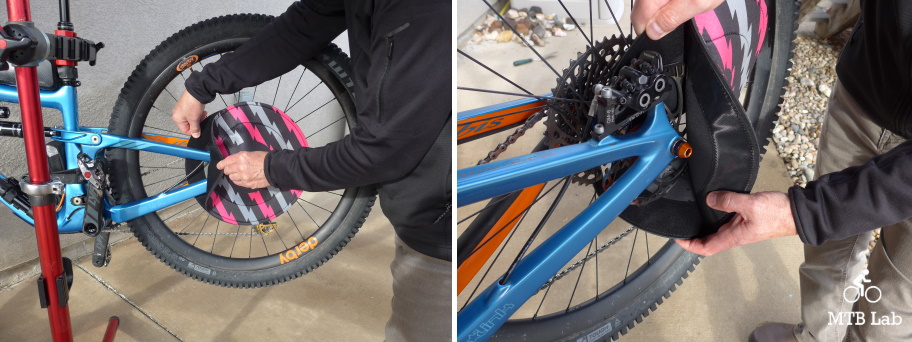
As you slide the base plate over the axle, you may need to separate the split slightly to squeeze it on for any spacing issues. Pull open the neoprene cover as required to overcome sizing constraints over the brake caliper. Continue sliding the cover on until the base plates hole is centered over the axle. Then smoosh the Velcro together all around the circumference of the cover for a tight seal.
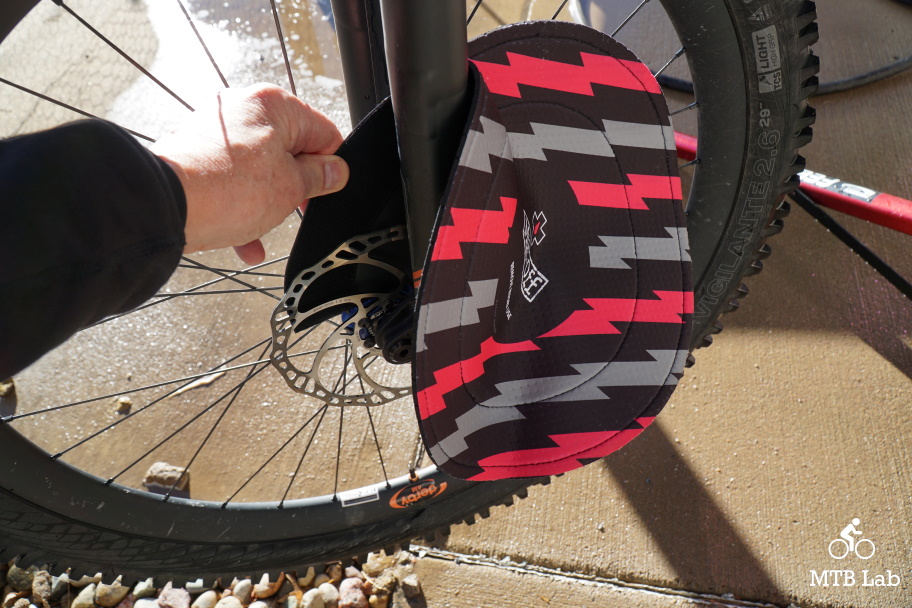
The front brake is trickier since you have to overcome both the fork and caliper assembly, and you’ll need almost to separate the base plate and neoprene in half to slide it over everything.
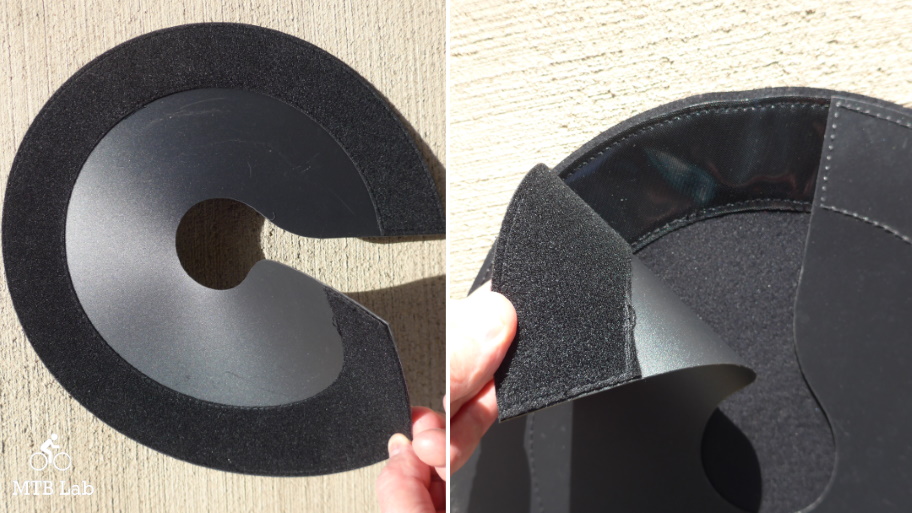
Plastic base plate, showing the Velcro, the split and center opening
Entirely pulled apart method: Separate the neoprene cover from the base plate and slide the base plate over the hub axle by pulling it apart slightly at the split. Then push until the base plates center hole is around the axle. To attach the neoprene cover, start at the caliper and press the cover over the caliper/cable and then around the entire rotor.
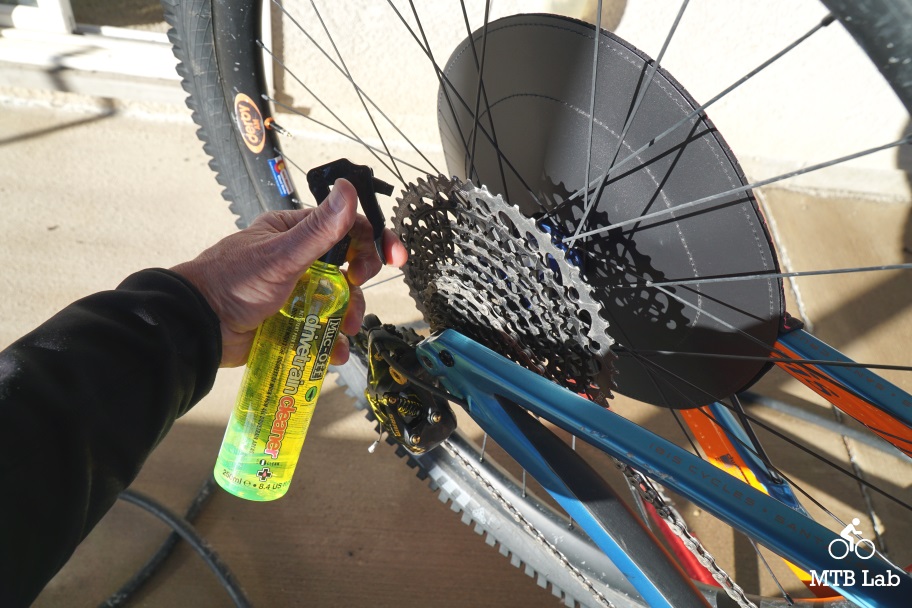
Covered disc brake protected from overspray
Impressions
Once the Muc-Off Disc Brake Covers are installed, your sensitive brake pads and rotors are protected from contamination. You can now perform any required post washing maintenance on your bike, which might include using cleaners, frame polishers, and drivetrain lube, which are all harmful to the surfaces of disc brake rotors and pads. Even though they protect during cleaning, do not spray protectants or lubes directly onto the Disc Brake Covers for an extended period, which can cause oversaturation issues.
Drivetrain Cleaning
If your drivetrain is dirty and gunked up, then it’s time to clean it using the Muc-Off Bio Drivetrain Cleaner (or others) to help dislodge and loosen stubborn lube, grease, and dirt. You likely don’t want any cleaner overspray getting on the rear brake rotor and pads, so the Muc-Off Disc Brake Cover offers ideal protection. Spray the cleaner on the cassette, derailleur, chain, and chainrings and let it sit and soak into the built-up crud for about two minutes. If desired, you can pour the cleaner into a chain cleaning device for deep chain cleaning, though I just used a shop rag to wipe up the junk from the surfaces of the chain.
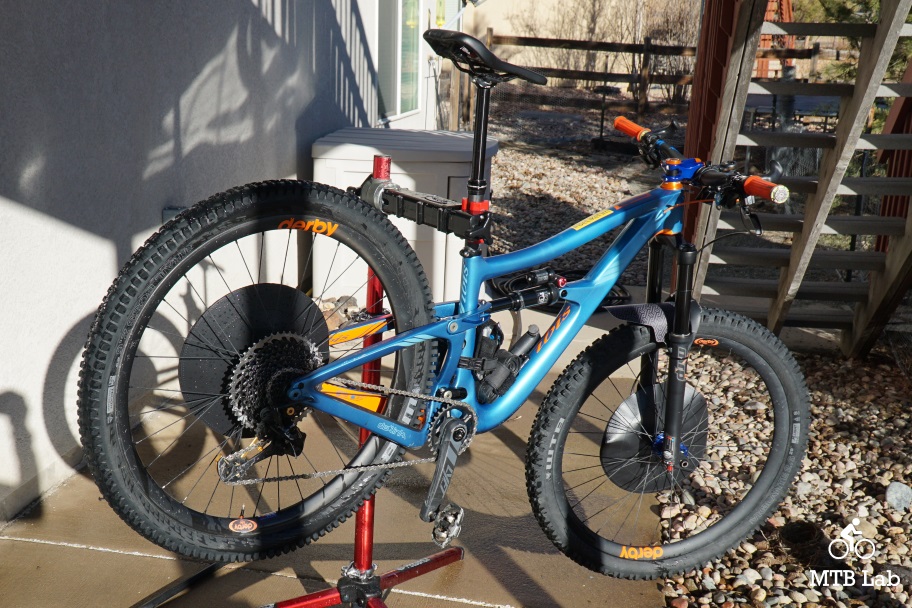
Protecting and Polishing
To get your bike nice and shiny, spray on their Muc-Off Bike Protect liquid protectant and polish. Due to the ingredients in the spray (a polish), you need to keep it away from the brake pads and rotors surfaces so that they don’t get contaminated. The ideal way to prevent the spray from hitting the brakes is to be using the extremely functional Muc-Off Disc Brake Covers to avoid any extra splatter from getting on them. Spray the Bike Protect all over the frame surfaces, wiping away any excess fluids and let the solution air dry. Once the protectant is dry, you now have a shiny and clean bike, all ready for the next adventures in the dirt.
Transporting
Besides offering protection from the overspray of cleaning, polishing, and lubrication chemicals, the Muc-Off Disc Brake Covers can also provide a barrier to contamination from road grime and debris during transport. That contamination can cause premature wear and tear. I see them as being especially advantageous when driving in winter conditions, and on dirty dust roads. I didn’t use the covers for transportation since I carry my bike in the back of my truck that has an enclosed topper.
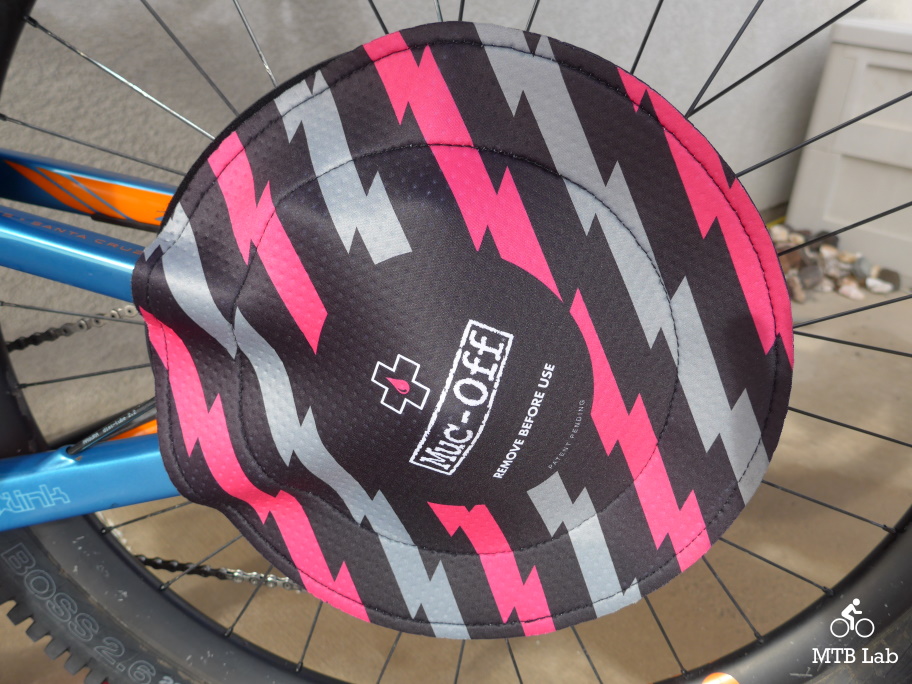
Bottom Line
The well-made and durable Muc-Off Disc Brake Covers fit all road and mountain bike disc brakes and can be rinsed and reused indefinitely. They consist of a breathable neoprene cover, a plastic base, and a Velcro closure system, making them easy to attach and detach over the front and rear brakes. Once firmly in place, they protect sensitive rotors and pads from the chemical overspray contamination of cleaners, polish, and lube used during maintenance. They’re much handier and offer more protection than tossing a shop rag over the rotor to prevent splatter.
Note: Do not ride with the covers attached!





{ 0 comments… add one now }